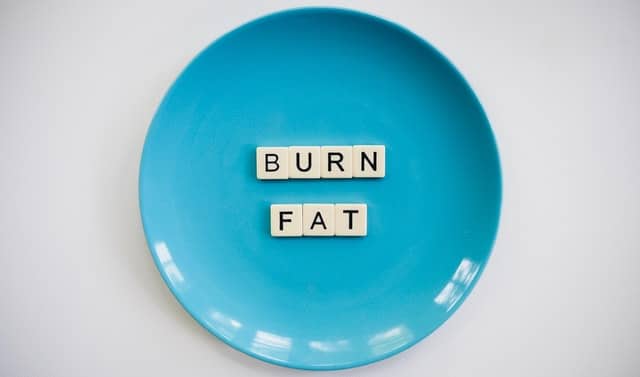We have seen many diets come and go, each with tall claims of catering to effective weight loss. Yet, almost all of them have low compliance rates due to many side effects tagged with most of them. The weight-loss equation equals reduced caloric intake and increased caloric output. Almost all of the weight loss diets meet this benchmark, but they tax hefty when it comes to health diligence. Except for one. Intermittent Fasting (IF).
What Is Intermittent Fasting?
Fasting is obviously not a new phenomenon. It has been a religious act in many cultures around the world. For example, the Greeks believed that fasting is a way to ward off disease and increase cognitive abilities. Hippocrates, Plato and Aristotle were all supporters of fasting.
Necessity is the mother of invention. Observing the health benefits of fasting, the topic was investigated for treating obesity since 1915. In 1960, the concept was taken up as a therapeutic protocol, and there surely has been no stopping to research work regarding the benefits of IF to date. Intermittent fasting is a modified version of cultural or religious fasting. It requires you to shorten the eating window and eat (sensibly) anything when that window opens. A cyclical meal consumption with periods of both fasting and eating. The idea of fasting may seem complicated, but it is easier to execute. There is no denying food, but only delaying it.
Types Of Intermittent Fasting
The usual IF routine is about periodic fasting. For this reason, common schedules include:
- The 16/8 method
The window of meal consumption is open for eight hours every day. After that, the rest of the 16 hours are fixed for fasting. The meal timings can be customized according to your schedule. However, the custom is to eat during eight peak hours of the day and fast during the rest. Breakfast is generally skipped in this type.
- Eat-Stop-Eat
This involves fasting for an entire day (24 hours) once or twice a week. So if you are skipping dinner today, you can have your dinner meal the next day at the same time.
- The 5:2 diet
This involves eating a very low-calorie diet (about 500-600 calories) on two alternate days a week. The rest of the days are spent eating normally.
What Happens In The Body?
Many changes occur at the cellular level in the body. The hormonal profile changes and the body gradually starts to shift from carbs to a fat-burning routine.
- Insulin levels drop, and cellular insulin sensitivity improves for better
- Growth hormone level spike, helping fat loss and cell repair processes
- Changes occur at the level of genes that bolster the body’s defence against disease and age-related cell damage
- Decreased production of damaging free radicals (decreased oxidative stress)
- Initiation of cell renewal process (autophagy)
Health Benefits Of Fasting
There are many science-backed health benefits of intermittent fasting. Research on intermittent fasting reveals such effects as:
- Weight loss and reduction in belly fat
- Increased metabolic rate
- Less lean muscle loss
- Helps manage type II diabetes
- Cuts back inflammation and risk of chronic disease
- Improves the health markers as regards heart disease
- Helps cut back on cancer growth and improve response to chemotherapy
- Enhances brain functioning via growth of nerve cells and increasing levels of brain-derived neurotrophic factor (type of growth hormone for the brain)
- Decreases the risk of stroke and brain damage
- Helps delay the onset and progression of Alzheimer’s, Parkinson’s and Huntington’s disease
A Doctor’s Opinion On Intermittent Fasting
However, IF is stealing the show in the weight loss industry for quite some time. The main reason for its popularity among the public is how the dietary routine brings about effective weight loss without damaging health. In contrast, IF is a hot topic for researchers because of its numerous health benefits.
It is easy to motivate a person to follow IF to cut back some figures on the weighing scale in clinical practice. Here is why IF is gaining repute by minutes among the masses:
- IF is not a diet in the true sense. The term caters more to meal timings than meal planning (what you can and cannot eat).
- Psychologically, it is easier for people to follow meal timings instead of following diet charts and calorie counts IF is convenient to adopt.
- We follow fast-paced lifestyles that leave less time to prepare home-based meals. That is the primary culprit behind the urge to resort to unhealthy eating habits. While following IF, it is easier to convert unhealthy ‘eating hours to ‘no-eating hours’ followed by meal consumption at timings of one’s convenience.
- The liberty to eat a hearty meal after an extended fasting period keeps one motivated to go hungry for a fixed time.
- IF yields results. Science backs it.
- IF does not cost anything (requires priceless willpower). All you need is to change your dietary pattern.
- IF can be adopted as a healthy lifestyle habit. Taking dictation about healthy dietary choices becomes an informed decision that one takes and keeps at it.
Intermittent Fasting Is Not An Option For?
Not everyone should follow the dietary pattern of IF. There are some contraindications to IF like:
- Under-weight individuals or those trying to gain healthy weight
- Pregnant women and nursing mothers
- People with a previous or family history of eating disorder
- Women who are trying to get pregnant or suffer from amenorrhea (lack of menses)
- Individuals suffering from low blood pressure or low sugar levels
- A patient with chronic stress, depression, or sleep disturbances
References:
- https://www.ncbi.nlm.nih.gov/pmc/articles/PMC1274154/
- https://www.ncbi.nlm.nih.gov/pmc/articles/PMC329619/
- https://pubmed.ncbi.nlm.nih.gov/16595757/
- https://pubmed.ncbi.nlm.nih.gov/17291990/
- https://www.ncbi.nlm.nih.gov/pmc/articles/PMC3106288/
- https://pubmed.ncbi.nlm.nih.gov/25540982/
- https://pubmed.ncbi.nlm.nih.gov/2405717/
- https://pubmed.ncbi.nlm.nih.gov/21410865/
- https://pubmed.ncbi.nlm.nih.gov/23244540/
- https://pubmed.ncbi.nlm.nih.gov/19793855/
- https://pubmed.ncbi.nlm.nih.gov/22323820/
- https://pubmed.ncbi.nlm.nih.gov/20157582/
- https://pubmed.ncbi.nlm.nih.gov/11220789/
- https://www.ncbi.nlm.nih.gov/pmc/articles/PMC151440/
- https://www.ncbi.nlm.nih.gov/pmc/articles/PMC2844782/
- https://pubmed.ncbi.nlm.nih.gov/17306982/
- https://pubmed.ncbi.nlm.nih.gov/10398297/
- https://www.ncbi.nlm.nih.gov/pmc/articles/PMC2622429/
- https://pubmed.ncbi.nlm.nih.gov/29419624/
- https://www.ncbi.nlm.nih.gov/pmc/articles/PMC3680567/





